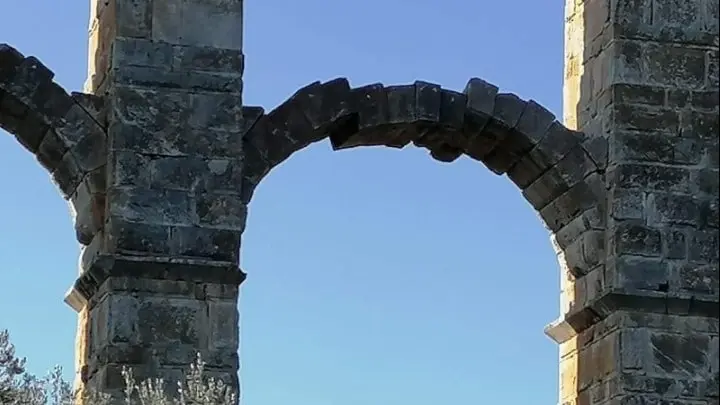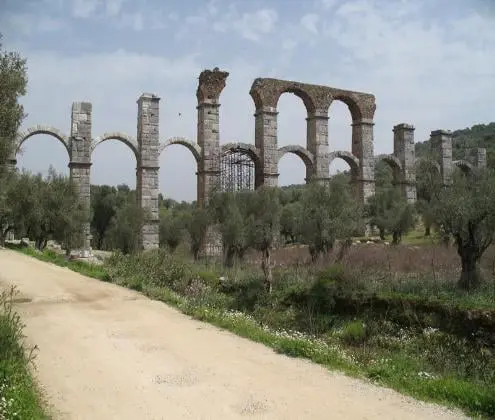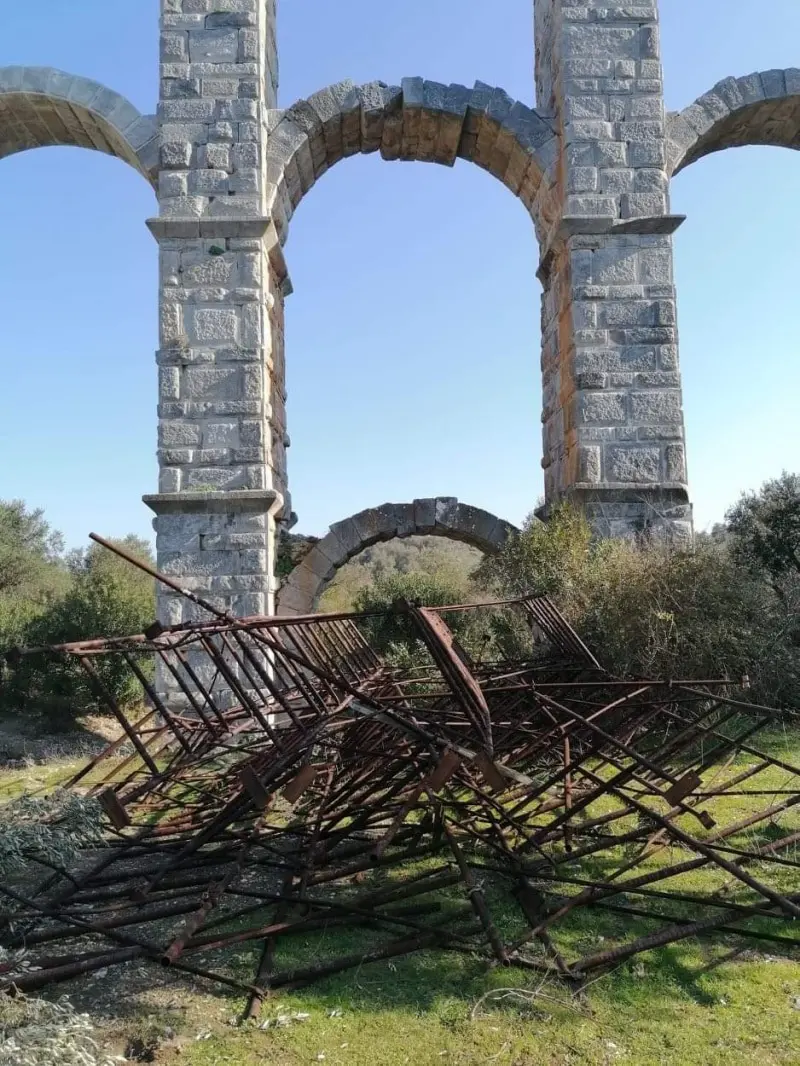
A Roman aqueduct in the area of Moria on Lesvos will be cleaned, fenced in, and the land it stands on will be expropriated, the Ministry of Culture said on Tuesday.
Dated tentatively to the end of the second or early third century AD, the aqueduct was built to transport water from the sources at Olympos to the ancient town of Mitilini, a distance of nearly 28 km (17.3 miles).
Estimates say it was capable of supplying 127,000 cubic meters of water to the town per day.
Some of its unique characteristics include Classical-era elements and advanced engineering skills, resolving issues of irregular terrain, different water levels, while it traversed valleys.
The aqueduct’s most outstanding feature is the water bridge or archway visible in Moria, which is 170 meters (558 feet) long and at its greatest height towers 26 meters (85 feet) into the air.

Aqueduct’s construction extraordinarily impressive
The structure consists of 17 square pylons, arches, and an upper register made of compact clay bricks.
The fact that any of the Roman structure is still standing bears witness to the strength and ingenuity of its construction.
In addition, the Roman Aqueduct of Lesvos also used underground conduits and channels carved into the rocks.
Some of these conduits, for example, were used for providing water to the public fountains to be used for drinking, as well as the popular Greek baths.
Another important component of the Roman Aqueduct is the masonry, the walls, whose main particularity consists of having been constructed by a system called “emplekton.”
Support for the restoration and support of the structure came from the 2000-2006 EU funding period, with that project concluding in 2004.

Grants for restoration
The ministry explained that “the monument’s long-term exposure to the elements, the irregular terrain (foundations on a streambed) and mainly recent seismic activity in the region of Lesvos island, have contributed to reducing the aqueduct’s durability and stability.”
It added that recent earthquakes displaced some of the stones on the central arch of the water bridge, and “immediate measures to save critical parts of the monument are necessary.”
Works initiated by Culture Minister Lina Mendoni include a grant of 30,000 euros to the Lesvos Ephorate of Antiquity to clean the area, remove rusty and useless supports, and to fence in the surrounding area.
The process of expropriating the land will also begin by seeking the approval of the Central Archaeological Council.
In addition, a 90,000-euro grant to the local restoration directorate will help it draw up a report evaluating its current state, and recording it on paper and through photography, as well as proposing appropriate measures to protect it.
With information from AMNA
See all the latest news from Greece and the world at Greekreporter.com. Contact our newsroom to report an update or send your story, photos and videos. Follow GR on Google News and subscribe here to our daily email!



